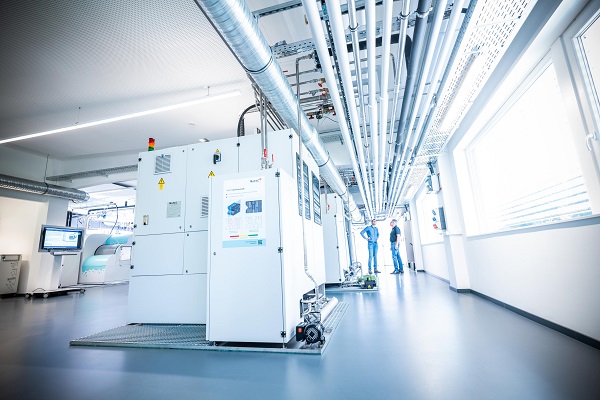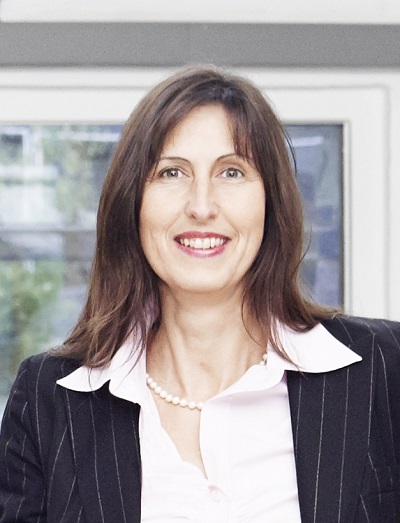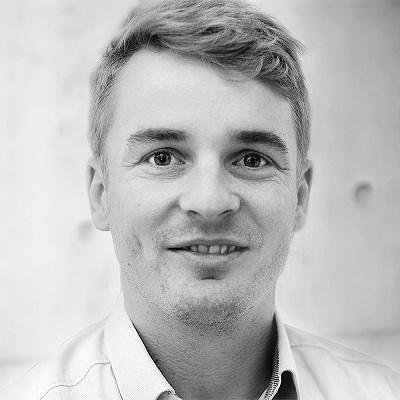
How large is your company’s carbon footprint? What are the emissions limits for your products during operation? And how can we move towards creating a climate-neutral factory? – In the run-up to EMO Hannover 2023, the world's leading trade fair for production technology with its focus on the "Future of Sustainability in Production", experts are discussing the significance of technological and methodological advances in an industry that makes production equipment for factories around the globe. The engineering sector is seen as an enabler for reducing greenhouse gases and achieving ambitious climate targets. At the same time, the engineering companies themselves are being urged to transition towards climate-neutral production as quickly as possible.
Determining the carbon footprint of companies and products
The target is for Europe to be climate-neutral by 2050. Even though there is currently no regulation which requires companies to be climate-neutral, the VDMA's Brussels office reports how the EU’s Green Deal has defined the rules for the industry. Firstly, it will be mandatory for companies to organize production in a way that conserves resources. Secondly, it will be necessary to drastically reduce emissions of the greenhouse gas carbon dioxide. To this end, the EU is planning to impose a carbon border tax on imports from third countries. Carbon costs, which are now rising due to the shortage of emission rights, are intended to stimulate demand for climate-friendly technologies. All companies will have to analyze their carbon footprint, and all products will receive a Digital Product Passport (DPP). The initial focus will be on consumer goods such as jeans and batteries, however in the medium and long term this will eventually be extended to include machine tools.
The VDW (German Machine Tool Builders' Association), organizer of EMO Hannover 2023, is also addressing the question of how companies can kickstart their carbon footprinting efforts and how they can be supported in this process. Member companies were recently invited to take part in an online workshop to determine what information and support they need. A brief survey of the participants revealed that almost 60 percent of them are already receiving specific demands from their customers. Banks, authorities and supply chain partners are also increasingly demanding life cycle analyses.
Footprinting framework: the Greenhouse Gas Protocol
Many companies are guided by the Greenhouse Gas Protocol (GHGP) when it comes to carbon footprinting. This is an internationally recognized standard that divides emission reduction measures into three “scopes”. Scope 1 emissions are companies’ direct emissions caused by the combustion of fossil fuels, for example for heating their premises, or by their own vehicle fleet. Scope 2 emissions include indirect emissions from purchased electricity, heating or cooling. Scope 3 includes all indirect emissions from upstream and downstream value creation and the life cycle of manufactured products such as machine tools. This scope therefore also includes materials and components from suppliers, and emissions that arise from the operation of a machine tool by users. The service life of a product is also evaluated, including what happens to it at the end of its life. Best practices
Best practices
At the VDW workshop, Claudia Brasse, Group Director Sustainability & HSE (Health, Safety, Environment) at Wilo SE, a globally active pump manufacturer headquartered in Dortmund, Germany, explained how to conduct a life cycle analysis and then develop a sustainability strategy from it. The company employs around 8,200 people in more than 70 production and sales companies worldwide. The overriding goal of the sustainability strategy: "We want to help provide clean water to as many people as possible," says Claudia Brasse, "while reducing our own ecological footprint."
To determine the climate footprint, the Dortmund-based company first began by recording energy consumption at its eleven major production sites (Scope 1) and then calculating baseline emissions (Scope 1 and 2). A Scope 3 evaluator (data collection and evaluation software) is used to help collect the data and calculate the greenhouse gas emissions in the supply chain. The results were integrated into the sustainability strategy, which is divided into four fields of activity: water, energy and emissions, materials and waste, and employees and society. Wilo assigns measures such as expanding the Smart Water Systems portfolio, saving energy through high-efficiency pumps, increasing the number of reusable parts, and reducing material consumption to the different fields of activity, and provides calculated target figures. As its targets to be reached by 2025, the company cites: reducing carbon emissions by a total of 50 million tonnes, climate-neutral production at all Wilo sites, lowering the consumption of raw materials by 250 tonnes, and achieving a recycling rate of 90 percent. The share of green electricity (generated from renewable energy) used by Wilo, is to increase to 100 percent by 2025, with a target of 20 percent from in-house electricity generation. According to Brasse, the measures will first be implemented in Europe, followed by the sites in the Asian region. In order to compensate for the remaining carbon emissions that cannot be avoided despite all efforts, Wilo, in line with its sustainability strategy, is supporting a well project in Malawi in Southeast Africa that is certified according to the recognized Gold Standard.
It is reasonably simple to analyze Scopes 1 and 2 – "Just get started!" – however, it is more challenging to identify Scope 3 emissions and formulate manageable targets, says Claudia Brasse. This applies above all to the product carbon footprint and the integration of life cycle analyses (LCA) into product development which this necessitates. Unlike in the past, when the attention was focused more on individual projects and specific, mostly scientifically-motivated issues, LCA will be a regular process for surveying and documenting all the relevant environmental impacts of products in future. Wilo implemented the Ecodesign Studio software for this purpose.
External support from scientific institutions
Many companies are enlisting external assistance to help them reach the challenging Scope 3 targets, as was also made clear at the VDW workshop. Experts from the different scientific institutions analyze energy and resource efficiency, identify weak points and propose effective measures. For example, the Berlin Fraunhofer Institute for Production Systems and Design Technology (IPK) is involved in the planning, organization and conceptual implementation of a series of workshops for companies as part of the "KliMaWirtschaft" project, funded by the German Federal Ministry for Economics and Climate Protection. The IPK also provides expert support especially for manufacturing companies as they move towards integrated climate management.
The IPK conducts applied research and development for the entire process chains of manufacturing companies. Institute director Prof. Eckart Uhlmann, who is also a member of the German Academic Association for Production Technology (WGP), sees enabling manufacturers to reduce the energy and resource consumption levels in all their production steps as a core task. For example, IPK scientists are conducting research into digital twins, with the ultimate aim of tracking the carbon footprint of products throughout their life cycle and reducing it in the long term. They are showing how energy-efficient background production processes (such as heat, ventilation or exhaust air) can be effectively planned, and how machines and systems can be optimally controlled. Recognizing opportunities in international competition
Recognizing opportunities in international competition
Martin Beck, Managing Director of ETA-Solutions GmbH, a service provider for energy system planning based in Bensheim, Hesse, is also responsible for the planning and implementation of energy-efficient systems. The company is a spin-off from the Institute of Production Management, Technology and Machine Tools (PTW) at TU Darmstadt. Beck criticizes the fact that, in many discussions, climate protection is often equated with regulation, and that customer expectations are not currently the main focus of the efforts. "There needs to be a lot more talk about competitive advantage and new business models," he urges.
ETA-Solutions is involved in the conceptual planning of the joint "Future of Sustainability in Production Area" stand at EMO Hannover 2023. Martin Beck emphasizes how it is the entire system, and not just the individual machine, which determines the efficient use of the technology. Around 90 percent of the potential for saving energy lies with the customer. Beck cites examples such as waste heat recovery, decentralized cooling with efficient chiller units, and thermal networking. These are proven methods of reducing the amount of energy required for cooling and heating in factories (and thus costs) by up to 82 percent, and carbon emissions by up to 72 percent. He points out that knowledge of how to influence energy consumption and carbon emissions must be applied systematically.
The climate neutrality business model, he says, is geared towards offering complete turnkey systems in which the turnkey process is extended to include demand-based design of the infrastructure, including power, cooling, heat or process air, and energy system planning is offered as a service. Beck is convinced that: "Those who develop expertise in this area and actively incorporate it into their sales strategy will improve their chances in the market, both in terms of new and also existing business."














